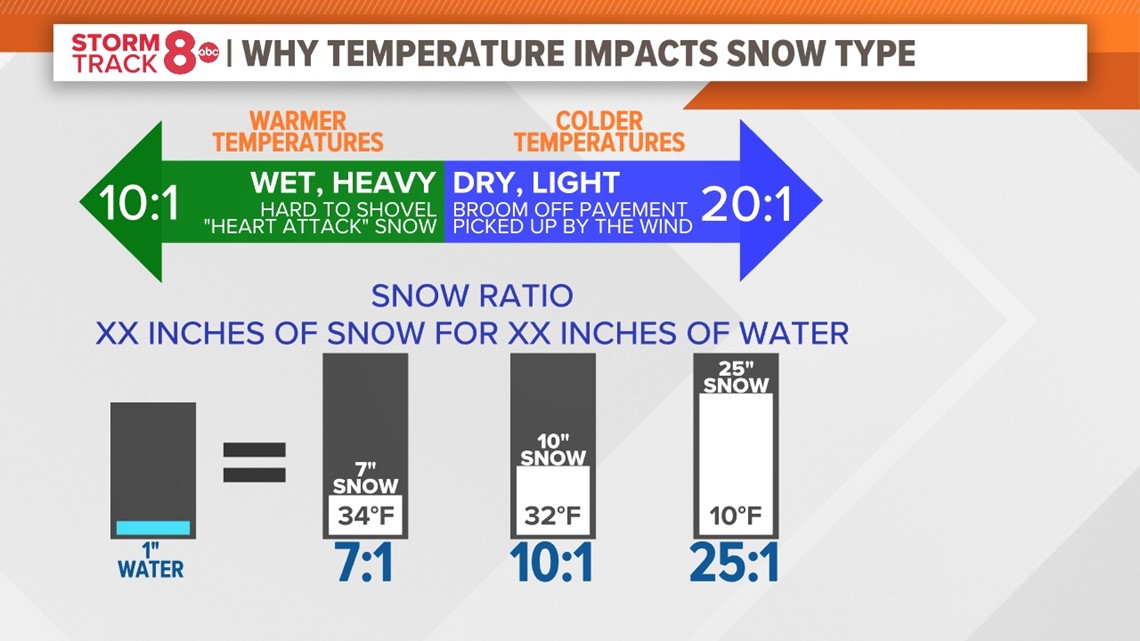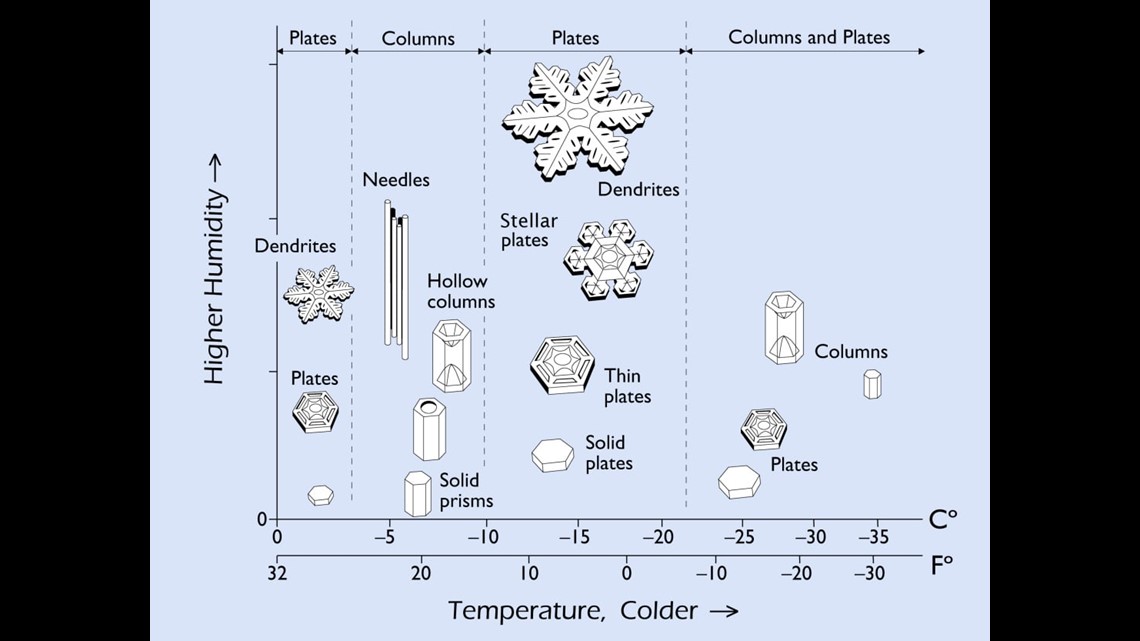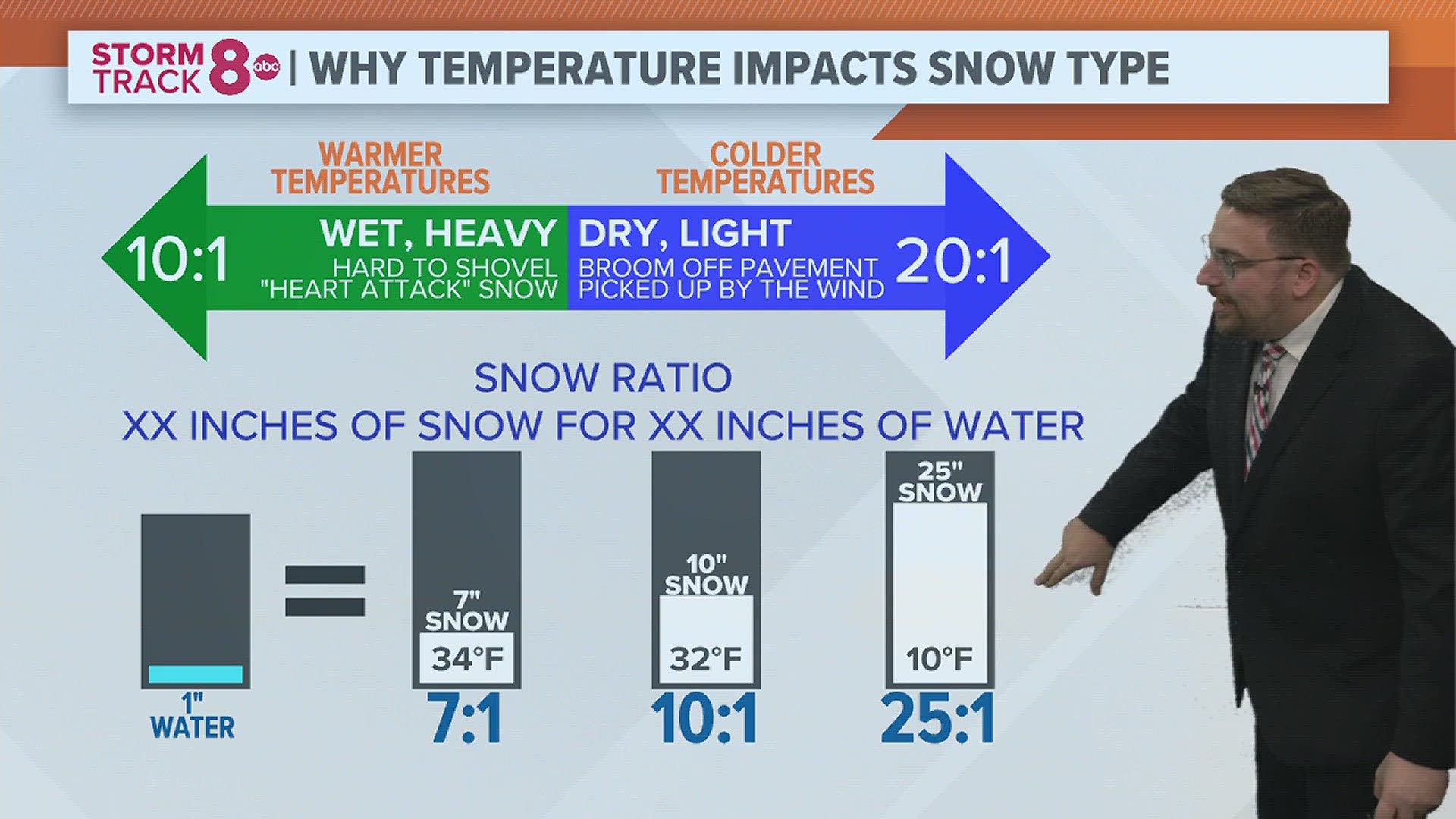MOLINE, Ill — Let it snow, let it snow, let it snow! We've seen our first taste of the flakes for the season already, but we have yet to pile up anything substantial in terms of snowfall accumulation. That will of course change in the coming weeks making it the perfect opportunity to talk about snow! More specifically, we are going to focus on the different types of snow and why colder air makes snow pile up more efficiently. Let's dig in!
Introducing the snow ratio
The technical definition for this term breaks down the percentage of water to snow. To determine this exact number you would melt the snow and measure how much liquid water is produced. For example, typically ten inches of snow would produce around an inch of water, creating a snow ratio of 10:1. However, this snow ratio can vary greatly depending on the temperature, which we'll explain next.
Why temperature matters
You've likely experienced two different types of snow, especially if you are from the Quad Cities. There's the wet, heavy, what we refer to as "heart attack" snow, and then there's the dry, light, and fluffy snow that blows and drifts around easily. The characteristic of the snow is all determined by the temperature of the air in which it falls through.


If the snow is falling while temperatures near the ground are hovering around freezing and slightly below, it will be the wet, heavy variety. Those warmer temperatures allow the snow to hold more water content and thus make it more heavy.
On the flip side, colder temperatures allow more space in between snowflakes, making them lighter and allowing them to pile up more efficiently on top of one another.


Did you know that even the wind can impact snow ratios? In strong winds, the snowflakes become more granular in shape and size. Typically this will result in a lower snow ratio.
Have a question that you would like me to answer for an upcoming Ask Andrew segment? Submit it, here!
Watch more news, weather and sports on our YouTube channel

